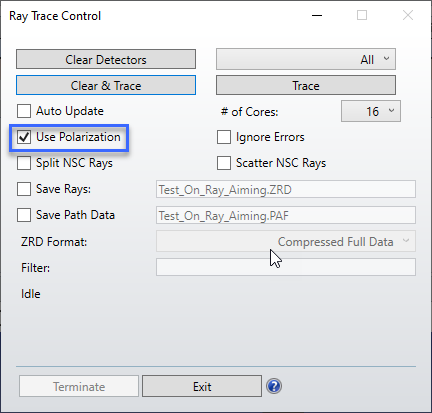Hi all. I am trying to use the ZEMAX non-sequential mode to simulate a Martin-Puplett interferometer. In the system, there is a polarizing beam-splitter to separate incident x- and y-polarized light to two different arms. Then the two separated beams will be reflected back to the beam-splitter by two roof mirrors and be recombined to propagate to the output. There should not be any light going back to the input, because roof mirrors can change the polarization by 90 degrees, so x-polarized light will change to y-polarized and vice versa. I use a Dual BEF Surface to simulate the beam-splitter, but as a result there is light going back to the input, which is not real theoretically.
So in order to test how ZEMAX deal with polarization of obliquely incident beam, I tried to let a beam incident to a Jones Matrix Surface with A,B,C,D = 0 obliquely. Such a Jones Matrix Surface should block all light, but as a result the light can still propagate through the surface.
So my question is, why the model surfaces fail with obliquely incident beam? How does ZEMAX deal with the polarization in this case? And how can I simulate the polarizing beam-splitter correctly?
Any help is appreciated. Thank you.





